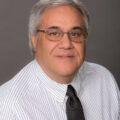
Joseph M. DiRienzo, PhD
Emeritus ProfessorDepartment of Basic & Translational Sciences
Professional Biography
Dr. DiRienzo studies the role of bacteria in the pathogenesis of periodontal diseases using molecular biology and biochemical approaches to identify and characterize virulence genes and their gene products from Aggregatibacter (Actinobacillus) actinomycetemcomitans. Studies are currently focused on the characterization of a cytolethal distending toxin and its effects on oral epithelial cells. Dr. DiRienzo is also studying the role of horizontal gene transfer in the dissemination of virulence genes in A. actinomycetemcomitans.
Students participating in the School’s student research program can work on the following projects:
My main research interest is the study of the role of bacteria in the pathogenesis of periodontal diseases using molecular biology and biochemical approaches to identify and characterize virulence genes and their gene products. Studies are currently focused on the structure and function of the cytolethal distending toxin (Cdt) of the periodontal pathogen, Aggregatibacter (formerly Actinobacillus) actinomycetemcomitans, and the effects of this cytotoxin on primary human gingival epithelial cells. The A. actinomycetemcomitans Cdt is a novel secreted cytotoxin composed of three self-assembling gene products. Orthologs of the cdt genes are expressed by a relatively small group of facultative or microaerophilic gram-negative pathogenic bacterial species all of which participate in diseases that involve the perturbation of an epithelial or mucosal layer. The varied genus distribution of the cdt genes fits a model of spread by horizontal gene transfer. Consequently, the acquisition and dissemination of virulence genes in A. actinomycetemcomitans is another research area of interest.
Aggregatibacter actinomycetemcomitans is the only indigenous member of the human oral flora, identified to date, that carries the cdt gene locus. A relatively large percentage of strains freshly isolated from the human oral cavity make a biologically active Cdt. When treated with recombinant A. actinomycetemcomitans Cdt, the proliferation of a number of common epithelial cell lines and primary human gingival epithelial cells, isolated in my laboratory, is inhibited due to a block in the cell cycle. Primary oral fibroblast-like cells including periodontal ligament fibroblasts, gingival fibroblasts, cementoblasts, and osteoblasts are resistant to the inhibitory effects of the Cdt.
The oral epithelium is an early line of defense against infectious microorganisms. A key early event in periodontal diseases is damage to the epithelial barrier leading to exposure of resident inflammatory cells, within the gingival connective tissue, to invading bacteria and bacterial products. Colonization of the subgingival microenvironment as a biofilm places A. actinomycetemcomitans in close proximity to gingival epithelial cells. Interestingly, A. actinomycetemcomitans has a particularly impressive repertoire of gene products, including the Cdt and autotransporter adhesins, that enhance its ability to specifically interact with, damage and modulate gene expression of these cells. In view of these interactions, more recent studies in my laboratory include the development of a human gingival explant model for studying A. actinomycetemcomitans virulence factors that target gingival epithelial cells in situ.
Honors / Credentials
- Scientific Review Panel, Immunology and Dermatology, Department of Veteran’s Affairs, 2016
- Merit Review Panel, Division of Molecular and Cellular Biosciences, NSF, 2014
- Scientific Review Panel, Vaccines Against Microbial Diseases, NIH, 2008
- Editorial Review Board, Oral Microbiology and Immunology, 1989-2007
- Special Emphasis Review Panel, Interdisciplinary Research Consortium I, NCRR/NIH, 2006
- James A. Shannon Director’s Award, NIDCR/NIH, 1995-1997″
Selected Publications
Find Articles On
Education
- Postdoctoral Training, Biochemistry, State University of New York at Stony Brook, 1977-1979
- PHD, Microbiology, McGill University, 1977
- BSC, Biology, Providence College, 1972″
